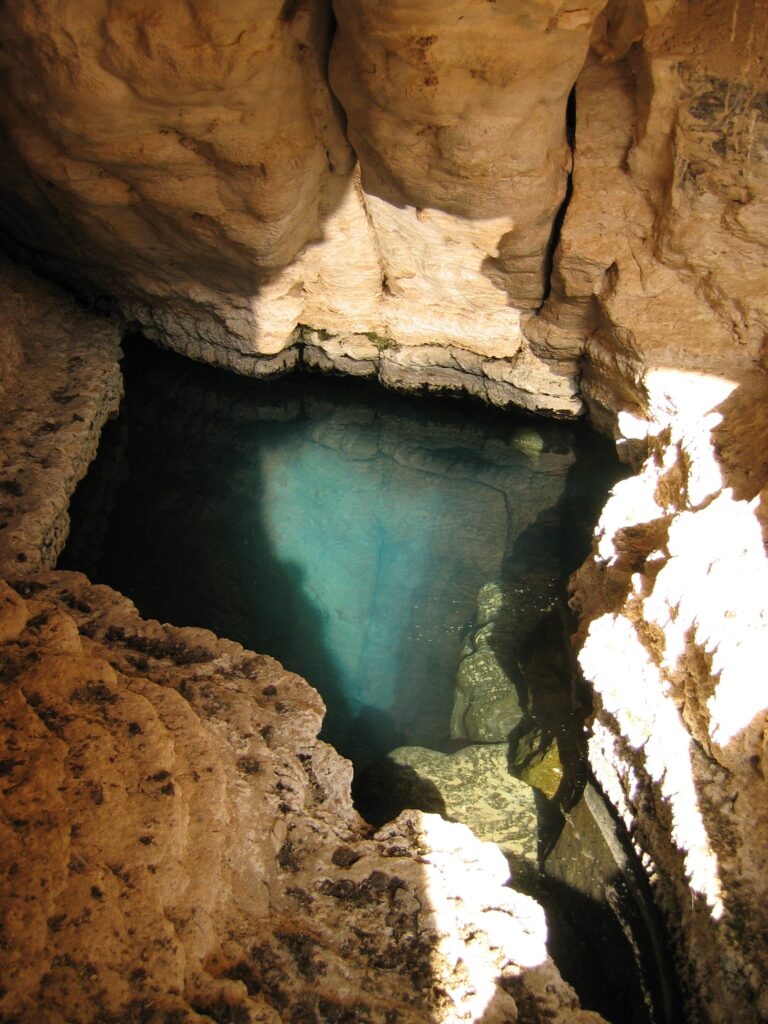

Devils Hole is a fascinating geological feature located within the Ash Meadows National Wildlife Refuge in the Amargosa Desert, about 90 miles west of Las Vegas, Nevada. This unique location, part of the Death Valley National Park, consists of a detached unit with a massive limestone cavern. Devils Hole is a geothermal pool that extends at least 500 feet deep and possibly much more. The water in the hole is heated from geological activity and remains approximately 90°F year-round. Devils Hole is an important geological site because it provides a continuous paleoclimatic record of water level marks on the walls. It records a span of over 500,000 years, which is rare in land environments.
The water inside Devils Hole can oscillate, forming standing waves known as seiche waves when an earthquake occurs thousands of miles away. The movement of the water can be so violent that it splashes several feet high on the cavern’s walls. ALT: Seismic Connection: Interestingly, it has been observed that the water level in Devils Hole can fluctuate with seismic activity worldwide. There have been instances when earthquakes as far away as Japan and Chile which have caused the water to churn.
Additionally, Devils Hole is home to the Devils Hole Pupfish (Cyprinodon diabolis). This species is one of the rarest fishes in the world; the species is endemic to Devils Hole. The Devils Hole Pupfish is critically endangered, with fluctuating populations.
The struggle to protect the Devils Hole pupfish and its habitat has been the subject of a legal battle reaching all the way to the U.S. Supreme Court. In 1976, the Supreme Court ruled in “Cappaert v. United States” that the federal government, as part of its duty to maintain Devils Hole, could limit groundwater pumping from a nearby ranch to preserve water levels for the pupfish.
